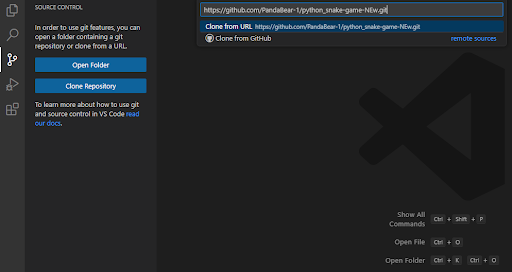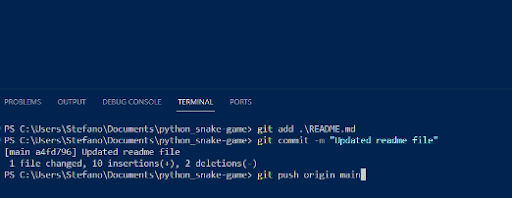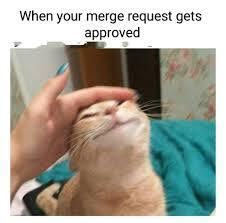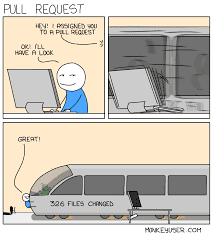Merge Mastery: Elevating Your Pull Request Game in Open Source Projects

Oluwadamisi Samuel Praise
Posted on February 15, 2024

Are you stuck in a solo coding loop, wrestling with cryptic commits and tangled branches? Or maybe you're a seasoned dev, yearning to contribute to larger-than-life projects? Whatever your skill level, welcome to the Mastering Pull Requests dojo– your gateway to collaboration nirvana!
No fancy footwork is required, just an open mind and a desire to unleash your coding powers. Beginners, we'll break down the pull request dance moves, step-by-step, until you're gracefully submitting and merging branches like a code waltz pro. Seasoned warriors and beginners alike, prepare to refine your skills with advanced AI Tools and answers to your burning pull request queries.
Participating in open-source projects is a sure-fire way to make a name for yourself in the coding world. Here, you will see how and why you should participate in these projects. So, grab your keyboard katana, sharpen your coding focus, and prepare to join the open-source adventure! Together, we'll master those pull requests and conquer the world of collaborative coding!
Pull Requests Demystified
Picture this: your once-promising project has morphed into a tangled mess of branches and bugs, and git add -A like other Git commands, taunts you like a broken spell. Meanwhile, across the coding galaxy, seasoned developer Alex wrestles with a merge conflict threatening to derail his revolutionary feature. These, my friends, are the coding challenges that pull requests were born to conquer.
What is Git?
Before we dive into pull requests, we need to have an understanding of what Git is, Git simply helps in version control. Imagine a team of developers with a single code base but different tasks for each developer — version control is needed to manage contributions without interfering with each other’s work or overwriting a contribution made by another developer. Git helps to make sure the project runs smoothly, with each section being added only when it has been deemed completed or adequate.
What is a Pull Request?
In simple terms, a pull request is a formal process of saying, “this is what I changed” and asking if it is okay to merge it into the final source code or code base. It is a presentation of what you changed, added, or deleted.
Pull requests are useful in open-source because they allow you to make contributions to projects that you do not own. All the changes and contributions for a team project must be brought together at one point, and the process of reconciling these different changes is called merging pull requests. Merging multiple pull requests leaves one main branch that includes all the contributions and changes from all the developers.
How to Submit a Pull Request
To submit a pull request, you’ll need to find a repository you want to contribute to, fork the repository, clone it to your local device, make your changes, commit them, and then push or publish your changes to Github. Simply go to GitHub and then click on compare and pull request, provide a clear description of your changes, submit for review, and, voila, you’ve submitted your first pull request. An in-depth guide is provided below:
Step–by–Step Guide to Creating a Pull Request
Before creating a pull request, you will need to select a repository and clone it directly to your local device.
Clone the GitHub repository
First, go to the repository that you want to clone, either through a link or by searching for it directly on GitHub.
NOTE: You can clone anyone’s public repository on GitHub and the private and public repositories of your own or your team.Click on the Green button with the text “Code”-- this will open a small dialogue where you will then copy the URL of the repository.
- Next, open Visual Studio Code and click on the “Branch” icon on the left-hand side. Then, click on Clone Repository, paste the URL copied earlier, and select the location or folder where you want this extra copy to be stored.
Finally, after saving the file, click on “Open,” and the Repository is successfully cloned, and the code will be available on your local device.
Make your changes; for this article, I made changes to the “ReadME” file.
Commit and Push in VScode
Now it is time for the Git commands. All that is needed are a few lines of commands: git add. which will include the file name: git commit -m to commit your changes with a description of the changes made; and git push origin main to push your changes to GitHub.
Open up the terminal and type the following commands
- git add .\ReadMe.md
- git commit -m “Updated readme file”
- git push origin main
And, voila– you have dealt with all of the strange git commands that plagued this process.
Finally, head to GitHub, and you will find the new updated file on your forked repo; click on the branch icon and send a request to merge with the main branch.
Merge into the Main Project Spotlight:
Once approved, it will be merged directly, or you will be given instructions to merge.
Why Pull Requests?
Now, why would these developers submit a pull request instead of simply making their changes directly to the main project? Because collaboration, my friends, is the secret sauce! Pull requests unlock a treasure trove of benefits to individuals and teams:
- Keeps source code healthy: Since the entire source code is cloned on each developer’s local device and a review is needed before merging, the source code is merged with already reviewed and approved changes, leaving it healthy.
- Peer reviews: More experienced developers in your field will have a look at your contributions and your code, and this will have the ultimate goal of improving your code and fostering growth.
- Constructive feedback: After submitting your pull request, a review is done, and feedback is given for improvement and criticism.
- Flag any problems: Issues with a new feature or code are detected before being added to the source code, preventing potential issues from arising later on in the development process.
- Shared expertise: Multiple eyes catch more bugs, and diverse perspectives lead to richer features. Think of it as a brainstorming session in code!
- Quality control: Reviews act as a filter, ensuring high-quality code joins the main project. No more rogue bugs lurking in the shadows!
- Clean history: Pull requests maintain a transparent record of changes, making it easier to track the project's evolution and debug future issues. Imagine a detailed map of the team’s coding journey!
But what if this bazaar of collaboration remained closed? Not using pull requests would lead to chaos, code conflicts erupting like rogue camels, and innovation becoming lost in a tangled mess of conflicting edits. It would be like trying to build a magnificent library with everyone scribbling on the same page! Companies of different sizes should embrace pull request reviews, as avoiding them will lead to more problems in the future.
AI-Powered Tools for Developers!
When contributing to open-source projects or working on a team of developers, you need to make yourself stand out, giving yourself an advantage over your fellow developers. Embrace the power of tools and extensions to level up your coding game. I introduce to you CodiumAI, an AI-driven company that has produced an IDE extension for code snippets, code suggestions, and consistent code formatting. It also offers a Git solution, PR-Agent, which solves the strenuous process of PR review, providing functions to describe, review, etc. These tools assist experienced and beginner developers alike to expedite the PR review process.
You can check out the articles below for an in-depth understanding of how to use these tools:
CodiumAI's PR-Agent
CodiumAI's IDE Extension
Pro Tips and Tools and Best Practices
Create a Draft Pull Request.
A draft pull request is a special state of a pull request that signals it’s not yet ready for formal review and merging. This is where CodiumAI’s PR-Agent excels; it comes fully equipped with functions that describe, review, and improve, among other important commands. When the formal pull request is submitted, it is easily accepted for merging, as PR-Agent has already reviewed your PR and suggested changes, optimizations, and documentation.
Craft compelling Titles and Commit Messages:
Think of your pull request title as a headline: captivating, concise, and accurately reflecting your changes. Ditch vague titles like "Update" or "Made some changes." Instead, aim for something like "Fix login form validation bug" or "Added cool new feature: animated loading screen."
Commit messages are like mini-roadmaps. Keep them short and sweet, describing the specific change you made (e.g., “Reduced API calls for better performance”).
Organized Code:
Your code shouldn't be a tangled mess of notes, but a well-organized symphony. Use proper indentation, descriptive variable names, and functions that are modular and reusable. Sprinkle in meaningful comments, guiding collaborators (and your future self!) through your logic and any tricky bits. CodiumAI’s IDE extension solves this easily.
Feedback Ninja: Prompt and Pro:
Nobody likes a ghosting collaborator. Respond to feedback promptly and professionally. Address concerns, ask clarifying questions, and be open to constructive criticism. Remember, collaboration is a two-way street!
Contribute to Pull Requests and Open-Source Projects
Sure, you can code solo, headphones on, lost in the digital wilderness. But let's be honest, wouldn't you rather level up your coding game, forge connections with fellow warriors, and contribute to projects that change the world? That's exactly what awaits you on the glorious battleground of active open-source participation!
How do you Contribute to Open Source?
- Making Pull Requests
- Reviewing Pull Requests
- Commenting on Pull Requests Try out the AI tools I introduced to greatly aid you as you carry out these processes.
The Call to Arms:
So, don't just spectate, my fellow coder! The open-source battlefield awaits your talents. There are a lot of repositories that contain issues marked with first-timers-only and up-for-grabs labels. These labels signify issues that should be easy for beginners to implement and contain documentation to help you through the process.
Here are some beginner-friendly projects to jumpstart your pull request journey:
- GitHub's First Contribution guide: A gentle intro to contributing to open-source.
- Up-for-Grabs projects: Find issues specifically marked for beginner contributions.
- Good First Issue lists: Explore projects with curated beginner-friendly tasks.
Remember, every contribution, from the smallest bug fix to the most ambitious feature, matters. Resources like online tutorials, coding communities, and mentorship programs are just a click away.
Conclusion
In this article, we have simplified Git explaining why and how to contribute to pull requests and introducing you to open-source and amazing AI tools to aid developers in this process. So, are you ready to unleash your inner code warrior? Dive into the world of pull requests, sharpen your skills, build your network, and leave your mark on the world. Remember, with every line of code, you contribute to a more collaborative, impactful, and truly incredible future. Now go forth and conquer!

Posted on February 15, 2024
Join Our Newsletter. No Spam, Only the good stuff.
Sign up to receive the latest update from our blog.
Related

February 15, 2024





